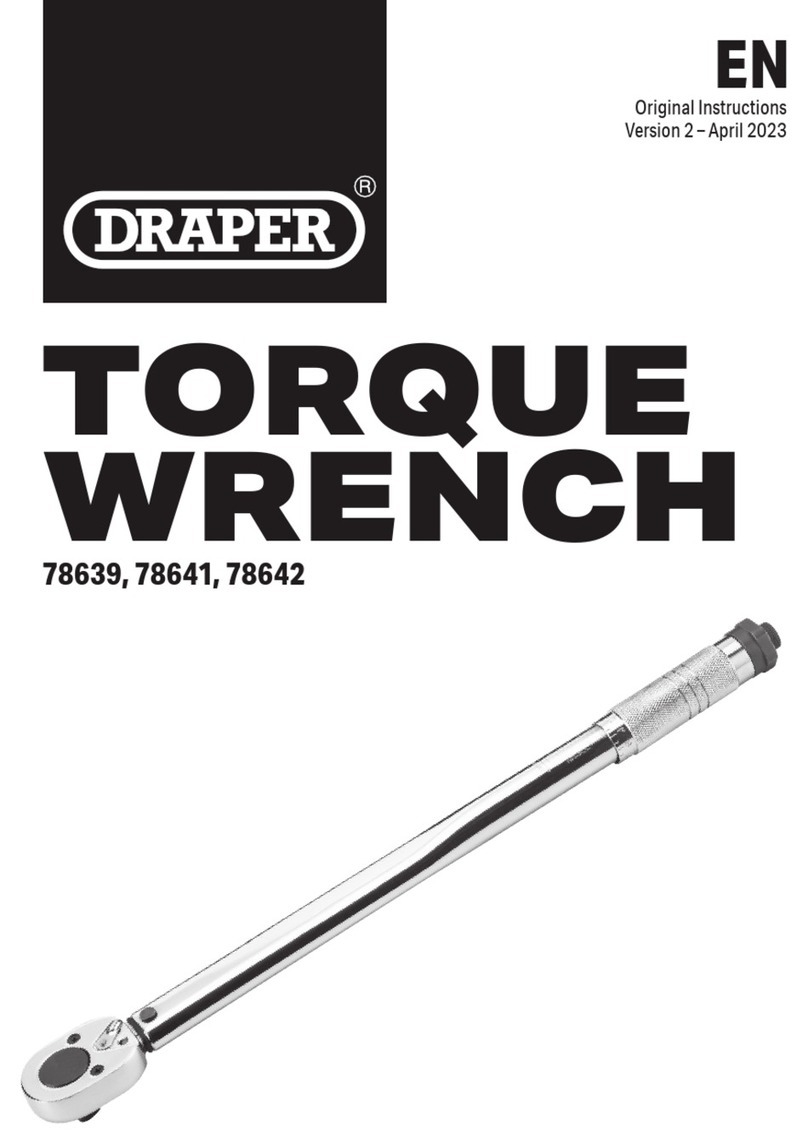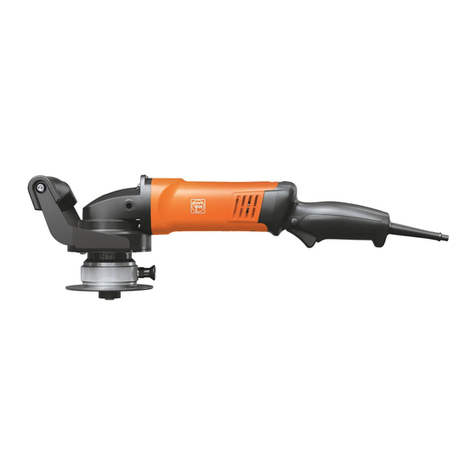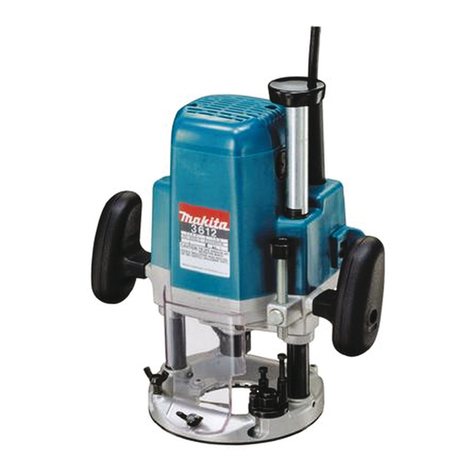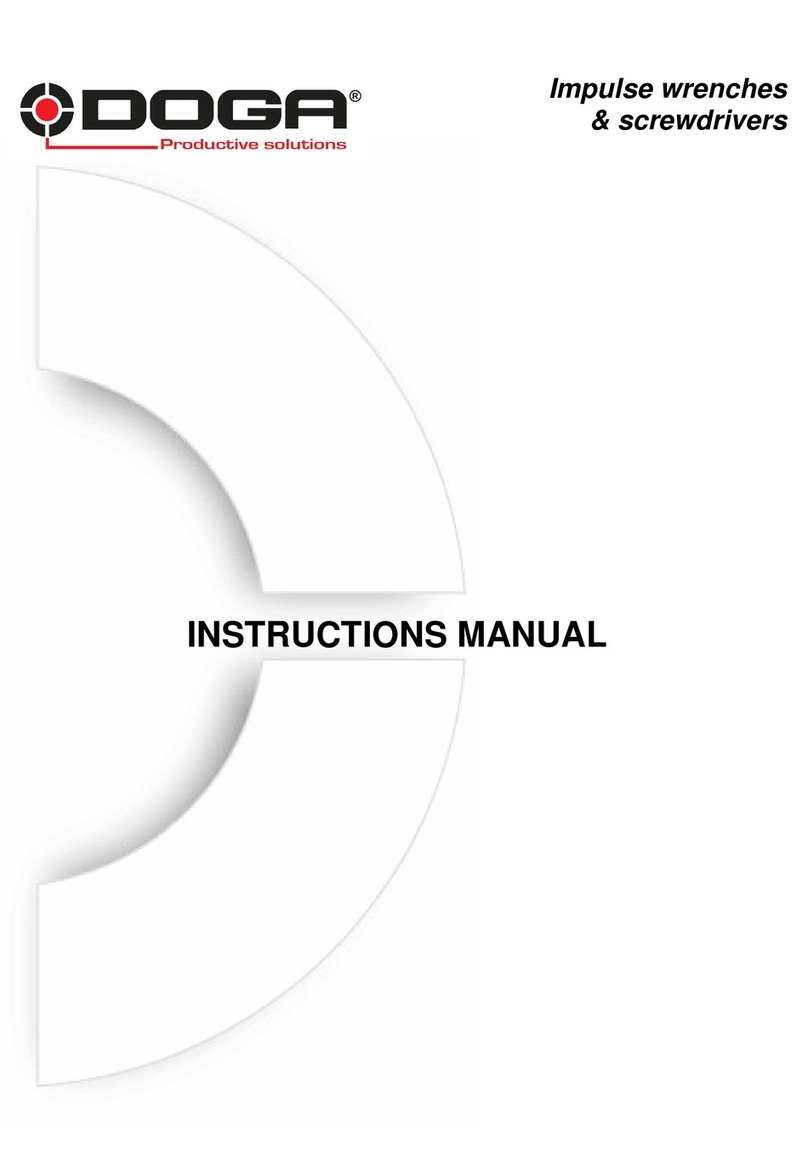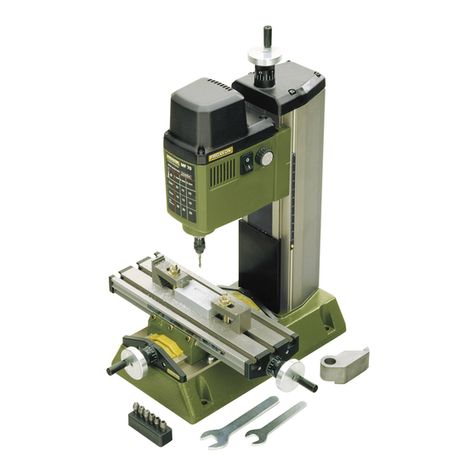Audio Research SP9MKII User manual

audio
research
H I G H D E F I N I T I O
N"
3900
ANNAPOLIS
LANE
NORTH
I
PLYMOUTH,
MINNESOTA
5544
7-544
7 I
PHONE:
763-577-9700
FAX
763-577-0323
MODEL
SP9MKII
PREAMPLIFIER
OWNER'S
MANUAL
5-11-89

TABLE
OF
CONTENTS
SECTION
PREFACE
INTRODUCTION
WARNINGS
PACKAGING
DESCRIPTION
OF
CONTROLS
CONNECTIONS
INSTALLATION
INSTRUCTIONS
OPERATING
PROCEDURE
INPUT
IMPEDANCE
ADJUSTMENT
REDUCING
GAIN
SERVICING
CLEANING
WARRANTY
TERMS
AND
CONDITIONS
WARRANTY
OUTSIDE
THE
USA
SPECIFICATIONS
ADDENDUM:
SCHEMATIC
AND
PARTS
LIST
-i-
PAGE
l-2
2
2
2-4
4
4-5
5-7
7-8
8
9
9
l
0-
l l
ll
12

PREFACE
Please take the time to
carefully
read
this
Instruction
Manual
prior
to
installation
or use
of
your
SP9
Mark
II
preamplifier.
Because
it
is a highly advanced
electronic
instrument,
there
are several
facts
and
procedures
you
should
know
before
you
place
it
in operation.
Just
as
you
would
not purchase
and
attempt to operate
an
expensive camera, computer system
or high-performance automobile without
first
learning something about performance parameters
and
correct
operating procedures,
so
too your preamplifier
requires
some
familiarization
before
you
make
it
part
of
your
music
reproduction system.
Your
reward, in terms
of
maximum
performance
and
a long service
life,
will
be
well worth the
effort.
INTRODUCTION
The
SP9
hybrid
stereo
preamplifier
has
been
an
overwhelming success
since
its
introduction
in June 1987, allowing a glimpse
of
truly
high-end musical reproduction to thousands of
music lovers
on
a budget.
The
original
SP9
was
a
simplified
adaptation
of
the hybrid
technology
which
first
appeared in the groundbreaking
SPll,
a
two
piece
unit
which
strikingly
redefined
The
State-of-the
Art.
In
the
two
years
that
have
followed, the hybrid technology
has
been
developed
and
refined
further,
as evidenced
by
the
SP15
and
SP14
preamplifiers
which
have
picked
up
where
the
SPll
left
off,
and
continue to define the
state-of-the
art.
With
the
knowledge
gained during these
two
years,
and
sonic references redefined,
we
are
proud to announce the
Mark
II
revision
to the
SP9
preamplifier
Technically, the
Mark
II version
of
the
SP9
preamplifier
includes a group
of
14
different
improvements,
utilizing
61
component
and
wire changes.
These
combine
to provide enhanced
_reliability
and
flexibility,
in
addition
to the sonic improvements.
*
*
*
In
the
CD
input the gain
has
been
reduced
by
12
dB,
allowing operation
of
the gain control in
its
mid
rotation
or high
positions,
while
still
leaving
all
other
inputs with
normal
gain
for
lower input program sources.
Low-level
hum
in the
line
section
is
reduced 10-20
dB,
which
is
noticeable
primarily
in systems with
high-efficiency
speakers, small
''live''
rooms,
high-gain
power
amps,
or low-noise
CD
program sources.
The
power
supply
and
phono
sections
are ''beefed
up''
to prevent accidental
damage
if
a
CD
source
is
mistakenly connected to the
MC
phono
inputs
and
is
played
at
a high
level,
even with the
mute
on.
Sonically,
the
perspective
of
the
SP9
has
changed.
If
one
thought
of
the
original
SP9
as
a simpler
SPll,
then the
Mark
II
can
be
thought
of
as a
junior
SP14.
The
SP9
Mark
II
is
sweeter
and
more
lucid,
exhibiting
less
electronic
glare
or
grain,
while resolving
more
detail
than
before.
Images
are
better
defined in a
more
three-dimensional soundstage,
emerging
from
a blacker background.
Combining
this
with
greater
dynamic
contrasts
makes
the complete
presentation
much
more
vivid
and
lifelife.
A
pleasant
result
of
these refinements
is
that
the
SP9
Mark
II can
be
interfaced
more
successfully
with
less
expensive
amplification.
Introducing the
SP9
Mark
II
into
modest
audio systems
will
bring
startling
improvements not previously thought
possible
with
this
level
of
investment.
The
exceptional value
of
the
SP9
Mark
II
is
refreshing
in
today's
crowded
marketplace. 1

In
short,
the
SP9
Mark
II hybrid
preamplifier
is
a product
you
can
be
proud to
own
and
enjoy
for
years to
come,
without
fear
that
it
will
soon
become
technically
obsolete
or
sonically
dated. Taking the time to
carefully
read
and
understand the remainder
of
this
Owner's
Manual
will help insure
you
get
all
the enjoyment your
SP9
is
capable
of.
Happy
listening!
WARNINGS
l.
To
prevent
fire,
or shock hazard,
do
not expose your
SP9
to
rain
or moisture.
2.
This
unit
contains voltages
which
can
cause serious
injury
or
death.
Do
not operate
with cover
removed.
Refer
servicing
to your authorized
Audio
Research
dealer
or
other
qualified
personnel.
3.
The
power
cord
on
your
SP9
is
equipped with
an
18-guage, 3-conductor cable
and
a standard three-prong grounding plug.
In
addition,
your
SP9
uses
an
isolating
power
transformer with 4 KV-rated
insulation.
For
absolute
protection,
do
not
defeat
the
ground
power
plug. This provides powerline grounding
of
the
SP9
chassis
to provide
absolute
protection
from
electrical
shock.
4.
For
continued
protection
against
fire
hazard, replace the fuse only with the
same
type
and
rating
as
specified
at
the fuse holder.
PACKAGING
Save
all
packaging in a dry place
away
from
fire
hazard.
Your
SP9
preamplifier
is
a
precision
electronic
instrument
and
should
be
properly cartoned
any
time shipment
is
made.
You
may
not
have
occasion to
return
your
unit
to the
factory
for
service,
but
if
that
should prove necessary, or
other
occasion
requiring
shipment occurs, the
original
packaging will
protect
your
SP9
from
unnecessary
damage
or delay.
Note
that
your
SP9
retention
sockets.
for shipment.
has
been
shipped with
vacuum
tubes
installed
in
their
proper high-
You
may
do
likewise
if
the complete
original
packaging
is
used
DESCRIPTION
OF
CONTROLS
GAIN
CONTROL:
A
high-quality,
metal-film segmented control with
31
steps
and
accurate
tracking.
Use
it
to control loudness or
volume.
Rotation to the
left
attenuates
gain,
rotation
to the
right
increases gain. Best sonic performance
and
best
signal-to-
noise
ratio
will
result
if
the input signal
and
amplifier
input
sensitivity
allow
normal
listening
when
GAIN
is
set
between
10
o'clock
and
2
o'clock.
With
some
high-efficiency
loudspeakers, a high-output source such as a
CD
player,
and
with a high-gain
amplifier
lacking
an
input
volume
control,
you
may
discover
that
normal
listening
is
only possible with the
GAIN
control barely on, or in the 9
o'clock
position.
In
such circumstances
it
is
possible
to reduce the overall gain of the
SP9
by
6dB,
by
making
a simple
internal
adjustment.
See
the
ADJUSTMENTS
Section
of
this
Manual, or
contact
your
Audio
Research
dealer
for
assistance.
-2-

BALANCE
CONTROL:
When
rotated,
adjusts
the
relative
sound
levels
of the
left
and
right
channels.
The
12
o'clock
position
marks
the point of equal balance. Rotating the
knob
to the
right
decreases the level of the
left
channel
proportionally,
shifting
the sonic
image
to the
right.
Rotating the
knob
to the
left
shifts
the sonic
image
to the
left.
MODE
CONTROL:
Allows
selection
of
various single-channel
(mono)
and
two-channel
(stereo)
listening
modes.
Detents
mark
each
selection
option during
rotation
of
knob.
''Mono''
reproduces
identical
sonic information in both
right
and
left
channels. ''Reverse''
switches
left-channel
information to the
right,
right-channel information to the
left.
"Stereo"
is
the normally
preferred
mode
for
most
program
material,
producing the
most
realistic
spacial image. "Left" cancels
all
right-channel information
and
presents
left-channel
information to both channels.
In
the
same
way,
"Right" cancels
all
left-
channel information,
etc.
INPUT
SELECTOR:
Detents
mark
selection
of various source material options:
"Phono"
for
phonograph record
turntables;
"Tuner"
for
AM/FM
radio
tuners;
"CD"
for
compact
di
gi tal
disc
players;
"Video''
for
input
from
Beta or
VHS
videotape
recorder/players;
and
''Spare''
for
any
additional
high level source: tape,
tuner,
CD,
video,
etc.
The
signal source chosen
by
the input
selector
is
Recorder 2 outputs
when
the Monitor/Source switch
description
of Monitor/Source switch, next page.)
selector
is
always fed to the Recorder 1/Recorder
overridden.
fed to the
Main
and
Recorder
1/
is
set
to "Source." (See
The
source chosen
by
the input
2
outputs,
and
cannot
be
POWER
SWITCH:
Supplies
power
from
AC
wall
outlet
to
SP9
when
in
"Power"
position.
Although not
strictly
necessary,
it
is
nonetheless
good
practice
to put the
SP9
in
"Mute"
before turning
on
power
for
maximum
protection
of your
power
amplifier(s)
and
speakers.
MUTE/OPERATE
SWITCH:
In
''Mute''
position,
shorts
the
main
outputs of the
preamplifier
to
allow
listening
interruptions
for
telephone answering or
other
reasons. This switch
should always
be
activated
between
listening
uses
or
switching
of
inputs,
in
addition
to
turning
the
Gain
(volume) control counter-clockwise.
These
two
simple precautions will
prevent
inadvertent
misuse
of
your
SP9
and
help
protect
your
power
amplifier(s)
and
speakers
from
unexpected
transient
signal pulses (tone
arm
mishandling,
etc).
In
''Operate''
position,
this
switch allows the signal to pass normally to the
outputs.
CAUTION:
Do
not turn
up
the gain control
beyond
normal
listening
positions
when
the
SP9
is
in the
Mute
mode.
Always
turn the gain control
down
when
changing program sources
even
when
it
is
muted.
The
SP9
has
an
extremely
wide
dynamic
range,
and
switching to '
Operate
at
loud
levels
may
be
too
much
for
amplifiers,
speakers or
ears.
Furthermore,
at
extremely high signal
levels
(such as
from
a severe
blow
to the
turntable
or tone
arm)
in the
Mute
mode,
the
SP9
may
overload
internally.
This will not
harm
the
SP9,
but
it
may
take
10-15
seconds to
stabilize
from
the overload.
If
you
switch to Operate before
the
SP9
has
recovered
from
the over1oad,
you
wi
l hear a "pop"
when
the
mute
switch
is
actuated,
indicating
the presence of
unwanted
subsonic energy
that
may
damage
some
amplifiers
and
poorly-fused speakers,
if
the
SP9
is
left
in Operate.
If
you
hear a
"pop," switch immediately
back
to
Mute,
turn
down
the gain control
and
wait 15 seconds
or
so
and
try
again.
Under
normal
conditions the
SP9
muting has
no
"pops." (Turntable
rumble, record
warp
wow
or
other
subsonic
program
energy
may
also
cause small, harmless
mute
''pops.'' These ''pops''
may
be
eliminated
by
turning
down
the
SP9
gain control
before muting.)
-3-

POWER/MUTING
CIRCUIT
LED:
Glows
green to
indicate
unit
is
on
and
receiving
power
from
the
power
supply.
Note
that
for
approximately
45
seconds
after
start-up
or
in
"Mute"
mode,
this
LED
will
glow
more
dimly,
indicating
proper operation of the muting
circuit.
In
the ''Operate''
mode
(after
warm-up), the
LED
brightens
and
your
SP9
is
ready
for
normal
operation.
MONITOR/SOURCE
SWITCH:
In
''Monitor''
position,
this
switch ''bypasses'' the Input
Selector
and
presents the signal to the
main
outputs
from
sources (tape
recorders,
etc.)
connected
to the
"Tape
l"
or
"Tape
2"
input jacks
on
the
rear
panel.
In
the "source"
position,
the
program source
is
controlled
by
the Input
Selector
(Phono, Tuner,
CD,
etc.).
TAPE
1/TAPE
2
SWITCH:
Usable only
when
"Monitor"
has
been
selected.
Selects
either
''Tape
l''
or
''Tape
2''
inputs
and
connects
that
choice to the
main
outputs (through the
"high
level"
amplification
circuitry).
CONNECTIONS
INPUT
CONNECTORS:
All
are
clearly
marked
to
indicate
use.
All
high level
inputs
are
5OK
ohms
impedance.
Remember
that
impedance
of
"Phono"
input
is
control led
by
soldered-
in
resistor
values
on
the
main
circuit
board (see
INPUT
IMPEDANCE
ADJUSTMENT).
MAIN
OUTPUT
CONNECTORS:
There
is
one
(l)
set
of output connectors,
which
should
be
connected to your
electronic
crossover or
power
amplifier.
The
input
impedance
(load)
of
the
power
amplifier
or
electronic
crossover to the
SP9
main
outputs should
be
at
least
2OK
ohms
for
maximum
sonic
benefit.
NOTE:
At
the performance level
of
the
SP9,
high-quality
audio signal
interconnect
cables
are
critical
to preserving
maximum
fidelity.
Audio
Research RFI-shielded or unshielded
interconnect
cables are highly
recommended
for
connection to your
power
amplifier(
s)
and
to
other
ancillary
equipment.
See
your authorized
Audio
Research
dealer
for
recommended
lengths
and
prices.
RECORDER
1/RECORDER
2
OUTPUT
CONNECTORS.
Two
(2)
sets
are provided. Recorder outputs
should
be
connected to your
recorder's
"AUX"
or
"LINE"
inputs.
These outputs supply a
source of whatever
is
selected
by
the Input
Selector
Control.
Level
is
non-variable
and
approximately the
same
as the
selected
input source.
All
input/output
connectors
have
heavy
gold
plating
and
connect "ground" before
"hot."
(On
disconnect,
''hot''
is
first.)
INSTALLATION
INSTRUCTIONS
While
the
SP9
does
not
dissipate
an
unusual
amount
of
heat,
it
is
important
that
it
be
provided with reasonable
airflow
to assure long,
trouble-free
operation.
In
addition,
the following
installation
guidelines will help insure
maximum
sonic performance as
well as
reliable
service.
l.
Upright
and
horizontal mounting
is
suggested
if
extended operation (longer than
one
hour)
is
contemplated.
-4-

2.
Do
not ''stack'' the
SP9
on
top of a
power
amplifier.
overheating, but
"hum"
may
be
introduced
into
the
phono
of
the
amplifier's
power
transformer.
Not
only could
this
cause
circuits
from
the proximity
3.
Do
not place or operate your
SP9
on
a
soft
or
irregular
surface
such as a rug.
This will prevent proper
ventilation.
4.
Do
not operate your
SP9
without the top
and
bottom covers
installed.
These are
required both
for
safety
as
well as
shielding
from
interference
(except in
service
operations,
obviously).
5.
If
rack mounting
is
employed, use
Audio
Research
Rack
Mount
Ventilators
(RMV-3)
below
and
above your
SP9.
6.
If
side-by-side
mounting with
other
equipment
is
employed, place the
SP9
to the
right
of
the
other
chassis,
so
as to provide
maximum
spacing between another
power
transformer
and
the SP9's
sensitive
phono
input
circuitry.
7.
In
a
cabinet
or rack-mount
installation
which
has
an
enclosed back,
an
exhaust fan
is
desirable
so
as
not to operate the
SP9
in overheated ambient
air.
Operation of
vacuum
tube equipment
for
long periods of time in hot ambient
air
will shorten tube
life
and
increase chance of
failure
of
other
component
parts.
OPERATING
PROCEDURE
START-UP:
l.
Make
sure
Power
switch
is
set
to "Off"
position;
Mute
switch should
be
in
"Mute"
position;
and
"Gain" Control should
be
at
minimum
(full
counter-clockwise
rotation).
2.
Secure
all
rear-panel connections between
SP9,
power
amplifier(s)
and
input
sources.
Note:
Given
the advanced performance
capabilities
of the
SP9,
it
is
extremely important
that
high-quality
interconnects
be
used
for
connection to
ancillary
electronics.
Audio
Research brand
interconnects,
in
either
unshielded or RFI-shielded
configurations,
are
strongly
recommended.
Your
Audio
Research
dealer
can
assist
you
in determining optimal
lengths
for
your system.
3. Plug 3-prong powerline cord
from
rear
of
SP9
into
grounded
AC
wall
receptacle.
4.
Turn
Power
switch to "On."
Green
LED
will
glow
_dimly
for
approximately
45
seconds
while
power
supply
stabilizes,
indicating
operation of automatic muting
circuit.
After
this
warm-up
muting period, the
LED
will brighten
when
''Operate''
is
selected,
indicating
that
your
SP9
is
ready for
operation.
Note: For
superior
sonic performance, a
warm-up
period of
at
least
one
hour
is
recommended.
In
addition,
your
SP9
may
be
safely
left
''on'' continuously
for
maximum
performance
at
all
times, but
at
the expense of higher maintenance
costs
(more
frequent tube replacement).
5.
Rotate input
selector
to source
desired;
set
switch options to
positions
desired.
6.
If
''Phono''
has
been
selected,
make
sure impedance
is
properly matched to your
phono
cartridge
(see
INPUT
IMPEDANCE
ADJUSTMENT).
7.
Activate
input
source, then
deactivate
Mute
switch
and
adjust
Gain
Control as necessary
-5-

TAPE
DUBBING
PROCEDURE:
When
using the
SP9
as a control
center
for
recording, the program source to
be
dubbed
must
be
connected to
one
of the
five
inputs
controlled
by
the
front
Input
selector.
This routes the
selected
program to the Recorder l/Recorder 2
outputs,
which
should
connect to the ''aux'' or
''hi-level''
inputs
on
the
recorder(s).
(Check
to
make
sure
your recorder
doesn't
short
its
inputs
when
it's
not in ''record''
mode.
If
it
does,
it
may
severely
load or
distort
the SP9's output
signal.)
The
Tape
l/Tape 2 inputs are
for
listening
or monitoring only through the
main
outputs,
and
cannot
be
routed to the Recorder l/Recorder 2 outputs
for
dubbing.
When
using these
inputs,
your tape recorder should
be
switched to "Tape" or "Monitor,"
if
it
has
separate
record
and
play heads. This allows
true
"A-8"
comparison of
signals
before
and
after
recording, using the Monitor/Source switch
on
the
SP9.
Two
recorders
may
be
used simultaneously to record the
same
program.
While
dubbing
is
in process, the signal
from
either
of the
Tape
l or
Tape
2 inputs
may
be
listened
to
by
switching to "Monitor"
and
selecting
the
appropriate
Tape
l
or
Tape
2
input.
Switching
back
to "Source"
returns
the
listener
to the
program
being dubbed.
Two
different
programs
may
be
recorded simultaneously
by
routing
one
program
directly
from
its
source to the recorder (bypassing the
SP9)
and
routing the
other
source
through the
SP9
and
its
Recorder
outputs.
Then,
two
different
programs
may
be
monitored through the
Tape
l
and
Tape
2
inputs.
If
you
wish
to use a tape
unit
both as a program source to
be
dubbed
and
as a recorder
with monitoring
provisions,
then use
"Y"
connectors to feed both Spare
and
Tape
l inputs
on
the
SP9
from
the recorder
outputs.
Then
either
function
may
be
selected
without
changing connections.
Remember
that
if
you
accidently
select
the output
of
your
recorder as a signal source
and
send
this
same
signal
back
to the
same
recorder's
inputs,
you
may
generate
an
''echo loop'' or wild
oscillations,
depending
on
the gain
settings
on
the
recorder.
MUTING
PROVISIONS:
The
SP9
has
several prov1s1ons to help
protect
against
misuse
of
the exceptional
dynamic
range
and
wide
bandwidth
that
it
offers.
It
is
not
subject
to
damage
itself,
but
some
power
amplifiers
and
speakers are
more
limited
in
their
ability
to withstand signal
extremes. These
provisions,
both
manual
and
automatic, are designed not to
interfere
with a flawless
listening
experience of unprecedented
realism,
while giving reasonable
protection
against
warm-up
surges
and
power
line
interruptions.
However,
for
absolute
protection
of
associated
equipment
some
operator
understanding,
and
responsibility,
is
required.
Initial
"settling"
time
of
all
circuit
parameters within the
SP9
requires
approximately
5 to 10 minutes.
The
automatic muting
circuitry
timer
is
adjusted
for
about
45
seconds.
(This
is
because
recurrent
interruption
"settling"
time
is
much
less.
You
would
not
want
to wait
for
5-10 minutes each time such
an
interruption
occurred.)
The
Mute/Operate Switch allows
manual
disabling
of the
SP9
outputs during
any
moving
of
the tonearm or switching of equipment.
Use
of
this
switch will minimize
stress
on
your
amplifier
even
if
it
is
''off."
It
is
also
highly reconnended
that
manual
muting
be
employed
during the
initial
45
second
warm-up
period as well
as
during
turn-off
for
maximum
protection.
-6-

While
it
is
true
that
the automatic muting
will
provide reasonably adequate
protection
against
speaker burnout during these
periods,
it
has
limitations.
At
the
45
second
point
the automatic timer
''releases''
the
output,
and
since
full
subsonic
stabilization
has not
yet
occurred,
some
sonic unpleasantness
may
occur. Although
this
is
normally
adequate
protection,
utilization
of
the
manual
mute
provision
will
completely avoid
this
stress
to your speakers, as well as the
associated
sonic
unpleasantness.
Some
solid-state
power
amplifiers
have
a
DC
offset
present
at
their
input
connections.
(This,
of
course,
should not
be.)
Operation
of
the
manual
muting switch with such
an
amplifier
connected
will
result
in a
"click"
or
"pop"
in your loudspeaker (commensurate
in level with the
amount
of
the
offset)
each time the switch
is
activated.
Repair
or
replacement
of
such
amplifiers
is
suggested.
The
automatic muting
operates
as
follows:
1.
The
manual
mute
switch always
disables
both "main" outputs
and
overrides
any automatic
provisions,
even
when
the
SP9
is
turned
off.
(The
''Operate''
position
of
the
manual
mute
switch
is
functional
only
when
the
unit
is
not in the automatic
mute
mode.)
2.
The
45
second
warm-up
timer
will
restart
automatically
and
the
LED
will
dim
if
the
power
is
temporarily
interrupted
for
0.1 second
or
more. Note:
Power
supply
regulation
of
the
SP9
is
effective
down
to
lOOVAC
without
serious
sonic degredation.
3.
The
automatic muting
of
the
SP9
is
designed to
be
effective
only
against
power
line
interruptions
and
power
supply
failures.
It
will
not
mute
against
subsonic
signal
transmissions
from
your
turntable,
etc.
Proper
furng
of
speakers
is
essential
to
protect
against
excessive audio
level
or
power
amplifier
faults.
SHUT-DOWN:
1. Set
"Mute"
switch
to
"mute"
position.
2.
Rotate ''Gain''
control
counter-clockwise to
minimum
setting.
3. Deactivate
power
amplifier(s).
4.
Deactivate al 1 input
sources.
5. Set
SP9
Power
Switch
to
''Off''
position.
INPUT
IMPEDANCE
ADJUSTMENT
For
the
best
sonic performance
of
your
phone
pickup
cartridge,
it
should connect
to
the
proper load impedance
recommended
by
the
cartridge
manufacturer.
Your
SP9
comes
wired
with a
standard
load
of
47K
ohms
for
most high-output moving-coil,
or
moving
magnet
cartridges.
A
kit
of
precision
load
resistors
is
supplied with your
SP9
for
the
more
common
low-impedance load requirements
of
10,
33
or
100
ohms
for
typical
low
to
medium
output moving-coil
cartridges.
Consult your
cartridge
manufacturer
or
dealer
to
determine
the
optimum
load impedance
for
your needs.
You
may
wish to connect the load
resistors
at
the output
of
your
turntable,
rather
than in the SP9,
especially
if
you
may
be
using
more
than
one
turntable
or
cartridge,
with
different
load requirements.
-7-

The
use of prec1s1on fixed
resistors
provides
better
load accuracy
and
sonic performance
at
lower
cost
than
most
adjustable
or switchable loads.
Audio
Research can supply
audiophile grade non-standard load
resistor
and
capacitor
values
upon
request accompanied
by
$10.00 to cover order processing costs
(certified
funds or
money
order).
Solder the desired
resistors
to the
turret
terminal posts
on
the bottom of the
main
circuit
board near the
phono
inputs (see
illustration).
First
wrap
the
resistor
leads
around the posts 1/2 to 3/4
turn.
Then
solder
using the special
alloy
solder
supplied
with the
resistors.
Connect
one
resistor
between
the
left
and
center
posts
and
the
other
resistor
between
the
center
and
right
posts.
For
10
ohms
use brown-black-black-gold
resistors.
For
33
ohms
use
orange-orange-
red-gold
resistors.
For
100
ohms
use brown-black-black-black
resistors.
NOTE:
All
SP9s
have
two
560
picofarrad
capacitors
mounted
on
the
impedance
loading
pegs,
one
for each channel.
When
using
moving
coil
cartridges
these
capacitors
should
not
be
removed
when
adding load
resistors.
The
load
resistors
should
be
installed
in
parallel
with these
capacitors.
INPUT
CAPACITANCE
ADJUSTMENT
The
SP9
has
a
total
input capacitance of
600
Picofarrads with the
560
picofarrad
capacitors
installed
and
40
picofarrads without
them.
Different
value
capacitors
can
be
installed
to
match
the requirements of your
moving
magnet
cartridge.
Observe the
polarity
as
shown
in diagram
below
when
adding
capacitors.
REDUCING
GAi
N
SP9
Bottom
view,
rear corner.
0
0
,~
560
pF
capacitors
l I + +
Wrap,
solder
resistors
to
turret
terminals.
When
using the
SP9
with high-output
cartridges
or
high-sensitivity
power
amplifiers
or
high-efficiency
speakers,
you
may
find
that
you
typically
set
the
SP9
Gain
control
at
9-11
01clock,
where
the detented gain increments
may
be
too large
for
setting
the
desired
listening
volume.
For
more
precise
setting
of the desired
listening
level,
the
SP9
includes a simple
internal
provision to reduce the gain
of
the
line
section
by
6d8.
This
affects
all
signal sources,
when
using the
normal
Main
Output
jacks.
The
signal level
at
the Recorder Output jacks
is
unaffected. Note: the
CD
input
of
the
SP9
Mark
II
has
a
built-in
gain reduction
of
12
dB.
Other
line
inputs
have
normal
gain.
To
reduce the gain
by
6dB,
merely
remove
the bottom cover
and
unsolder the gain change
connection for each channel.
These
connections are located in the
central
area of the
bottom
of
the
main
circuit
board near
V2,
where
the
pads
identified
by
the
letter
11
A
11
connect to the large
central
ground path.
To
restore
the
SP9
to
its
original
gain,
merely
resolder
across these small
gaps
at
11
A.
11
For
best
results
use the special
alloy
solder
supplied with the
cartridge
load
resistor
kit.
8

SERVICING
Because of
its
careful design
and
exacting standards of manufacture, your
SP9
should
normally require only
minimal
routine
service
to maintain
its
high level
of
performance.
CAUTION:
Your
SP9
contains
sufficient
levels
of
voltage
and
current
to
be
lethal.
Do
not tamper with a
component
or
part
inside the
unit.
Refer
any
needed
service
to your
authorized
Audio
Research
dealer
or
other
qualified
technician.
The
two
(2)
vacuum
tubes
inside
your
SP9
are
quality
6DJ8
types,
and
with
normal
use
should not
need
to
be
changed
for
approximately 5,000 to 10,000 hours
of
use. Replacement
6DJ8
tubes
need
not
be
low-noise or matched
for
gain
characteristics,
and
are
available
from
Audio
Research.
At
the
back
of
the
Manual
you
will find a schematic diagram
for
your
SP9
which
is
fully
annotated with operating voltages
and
component
part
values.
Your
service
technician
will require
this
information
when
servicing
your
unit.
CLEANING
To
maintain the visual appearance of your
SP9
preamplifier,
occasionally
wipe
the
front
panel
and
top cover surfaces with a
soft,
damp
(not wet)
cloth
to
remove
dust.
Amild,
non-alkaline soap
solution
may
be
used to
remove
fingerprints
or
similar
smudges.
Cleaners containing abrasives should not
be
used as they will
damage
the ''brushed''
grain of the
front
panel
finish.
-9-

3-YEAR
LIMITED
WARRANTY
TERMS
AND
CONDITIONS
l.
LIMITED
WARRANTY.
Audio
Research warrants the product designated
herein
to
be
free
of manufacturing defects in material
and
workmanship,
subject
to the conditions
hereinafter
set
forth,
for a period of
three
(3) years
from
the date of purchase
by
the
original
purchaser or
no
later
than
five
(5) years
from
the date of shipment to
the authorized
Audio
Research
dealer,
whichever
comes
first,
excepting
vacuum
tubes
which
are warranted for
90
days only
(See
6).
2.
CONDITIONS.
This Warranty
is
subject
to the following conditions
and
limitations.
The
Warranty
is
void
and
inapplicable
if
the product
has
been
used or handled
other
than in accordance with the
instructions
in the owner's manual, abused
or
misused,
damaged
by
accident or neglect or in being
transported,
or the
defect
is
due
to the
product being repaired or tampered with
by
anyone
other
than
Audio
Research or
an
authorized
Audio
Research
repair
center.
The
product
must
be
packed
and
returned
to
Audio
Research or
an
authorized
Audio
Research
repair
center
by
the customer
at
his
or her sole expense.
Audio
Research will
pay
return
freight
of
its
choice. A
RETURNED
PRODUCT
MUST
BE
ACCOMPANIED
BY
A
WRITTEN
DESCRIPTION
OF
THE
DEFECT
AND
A
PHOTOCOPY
OF
THE
ORIGINAL
PURCHASE
RECEIPT.
This
receipt
must
clearly
list
model
and
serial
number,
the date of purchase, the
name
and
address
of
the purchaser
and
authorized
dealer
and
the
price
paid
by
the purchaser.
Audio
Research reserves the
right
to modify the design
of
any
product without
obligation
to purchasers of previously manufactured products
and
to change the
prices
or
specifications
of
any
product without notice or
obligation
to
any
person.
3.
REMEDY.
In
the event the above product
fails
to meet the
above
Warranty
and
the
above conditions
have
been
met, the
purchaser's
sole
remedy
under
this
Limited Warranty
shall
be
to
return
the product to
Audio
Research or
an
authorized
Audio
Research
repair
center
where
the
defect
will
be
rectified
without charge
for
parts
or
labor,
except
vacuum
tubes (See
6).
4.
LIMITED
TO
ORIGINAL
PURCHASER.
This Warranty
is
for the
sole
benefit
of
the
original
purchaser
of
the covered product
and
shall
not
be
transferred
to a subsequent
purchaser
of
the product.
5.
DURATION
OF
WARRANTY.
This Warranty expires
on
the
third
anniversary
of
the date
of purchase or
no
later
than the
fifth
anniversary of the date
of
shipment to the
authorized
Audio
Research
dealer,
whichever
comes
first.
6.
VACUUM
TUBES.
Vacuum
tubes are warranted for the
original
90-day period only.
7.
DEMONSTRATION
EQUIPMENT.
Equipment used
by
an
authorized
dealer
for
demonstration
purposes
is
warranted to
be
free
of
manufacturing
defects
in
materials
and
workmanship
for a period
of
three
(3) years
from
the date
of
shipment to the
dealer.
Vacuum
tubes
are warranted
for
90
days.
Demo
equipment needing warranty
service
must
be
packed
and
returned to
Audio
Research
by
the
dealer
at
his sole expense.
Audio
Research
will
pay
return
freight
of
its
choice. A returned product
must
be
accompanied
by
a
written
description
of
the
defect
on
an
AUDIO
RESEARCH
RETURNED
GOODS
AUTHORIZATION
form.
Dealer-owned demonstration equipment sold
at
retail
within
three
(3) years of date of
shipment to the
dealer
is
warranted to the
first
retail
customer to
be
free
of
manufacturing
defects
in
materials
and
workmanship
for
the
duration
of the 3-Year
Limited Warranty remaining (as measured
from
the date of shipment of the equipment
to the
dealer).
Vacuum
tubes are not warranted
for
any
period under these
conditions
of
sale.
In
the event warranty
service
is
needed under the
conditions,
the
owner
of
-10-

the equipment
must
provide a
copy
of
his purchase
receipt,
fulfilling
the requirements
described under ''2. Conditions'' above.
The
product
must
be
packed
and
returned to
Audio
Research or
an
authorized
Audio
Research
repair
center
by
the customer
at
his or
her
sole
expense.
Audio
Research will
pay
return
freight
of
its
choice.
8.
MISCELLANEOUS.
ANY
IMPLIED
WARRANTIES
RELATING
TO
THE
ABOVE
PRODUCT
SHALL
BE
LIMITED
TO
THE
DURATION
OF
THIS
WARRANTY.
THE
WARRANTY
DOES
NOT
EXTEND
TO
ANY
INCIDENTAL
OR
CONSEQUENTIAL
COSTS
OR
DAMAGES
TO
THE
PURCHASER.
Some
states
do
not allow
limitations
on
how
long
an
implied warranty
lasts
or
an
exclusion or
limitation
of
incidental or consequential damages,
so
the
above
limitations
or
exclusions
may
not apply to you. This Warranty gives
you
specific
legal
rights,
and
you
may
also
have
other
rights
which
vary
from
state
to
state.
9.
WARRANTOR.
Inquiries
regarding the
above
Limited Warranty
may
be
sent
to the
following address:
WARRANTY
OUTSIDE
THE
USA
audio
research
HIGH
DEFINITION"
5 7
40
GREEN
CIRCLE
DRIVE
MINNETONKA.
MINNESOTA
55343
..
4424
Audio
Research
has
formal
distribution
in
many
of the
countries
of
the
free
world.
In
each country the
Audio
Research Importer
has
contractually
accepted the
responsibility
for
product warranty. Warranty should normally
be
obtained
from
the importing
dealer
or
distributor
from
whom
you
obtain your product.
In
the
unlikely
event of
service
need
beyond
the
capability
of
the Importer,
Audio
Research does,
of
course, back
up
the warranty.
Such
product
would
need
to
be
returned to
Audio
Research,
together
with a
photostatic
copy
of the
bill
of
sale.
-11-

SP9
MARK
II
SPECIFICATIONS
Frequency response:
High
level section:
Phono:
Distortion:
±.5dB,
5Hz
to
50kHz
-3dB
points
below
lHz
and
above
200kHz
±.3dB
of
RIAA,
30Hz
to
40kHz
Less
than
.01%
at
2V
RMS
output. (Typically
less
than
.005%
in
midband)
Gain:
Phono
input to tape output:
46dB
Phono
input to
main
output:
67dB
Input
Impedance:
High
level inputs to tape output:
High
level inputs to
main
output:
C.D.
input to
main
output:
OdB
2ldB
9
dB
50K
ohms
Line Inputs;
47K
phono
(Phono
provisions
for
any
value
below
47K
ohms
or
added
input capacitance
for
matching
certain
magnetic
cartridges.)
Output
Impedance:
250
ohms
main
output;
850
ohms
recorder output.
Recommended
load
60K
ohms
and
lOOpF.
(20K
ohms
minimum
and
lOOOpF
maximum)
Maximum
Inputs:
Phono,
200mV
at
lkHz
(lOOOmV
RMS,
lOkHz).
High
level inputs
essentially
overload-proof.
Rated Outputs:
2V
RMS
5Hz
to
50kHz,
all
outputs,
60K
ohm
load
(main
output
capability
is
50V
RMS
output
at
1/2%
THD
at
lkHz
into
a
lOOK
ohm
load with
5V
RMS
high level input)
Power
Supplies:
Electronically-regulated
low
Shielded toroid transformer.
Noise:
High
Level
and
high voltage supplies
and
electronic
decoupling.
Line regulation
better
than
.01%
(1)
70uV
RMS
maximum
residual unweighted
wideband
noise
at
main
output
with gain control
minimum
(98dB
below
5V
RMS
output)
(2)
More
than
lOOdB
below
lV
RMS
input (Less than
7uV
equivalent input noise)
Phono:
0.12uV
equivalent input noise,
!HF
weighted, shorted input
(78dB
below
lmV
input)
Tube
Complement:
2 -
6DJ8/ECC88
dual
triodes
(Hybrid
FET/Tube
audio
circuit,
solid-state
power
supply)
Power
Requirements:
100-135VAC
60Hz
(200-270VAC
50/60Hz)
50
Watts
Dimensions:
19"
(48
cm)
Wx 5 1/4" (13.4
cm)
H (standard rack panel) x
10
1/4"
(26
cm)
0.
Handles extend 1 5/8'' (4.1
cm)
forward of
front
panel.
Rear
chassis
fittings
extend 7/8'' (2.3
cm)
Weight:
13
lbs.
(5.9
kg)
Net;
22
lbs.
(10kg) Shipping
12
This manual suits for next models
1
Table of contents
Popular Power Tools manuals by other brands
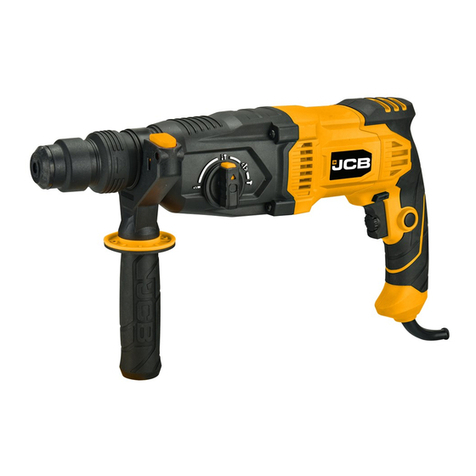
jcb
jcb 21-RH1050 Instructions & user's manual
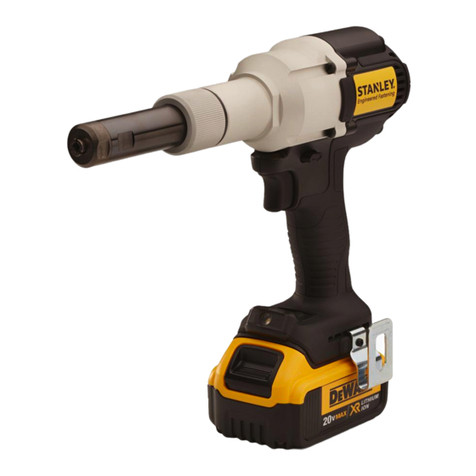
Stanley
Stanley Avdel NeoBolt PB2500N Instruction and service manual
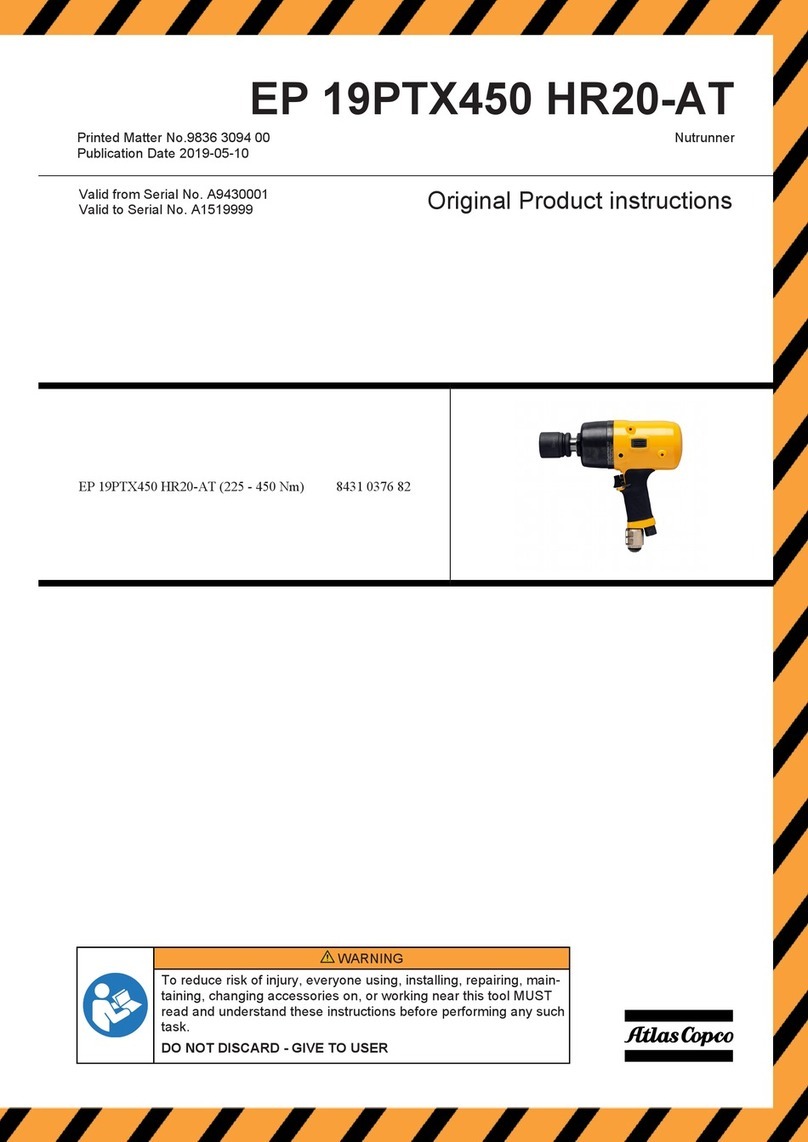
Atlas Copco
Atlas Copco EP 19PTX450 HR20-RE Original product instructions
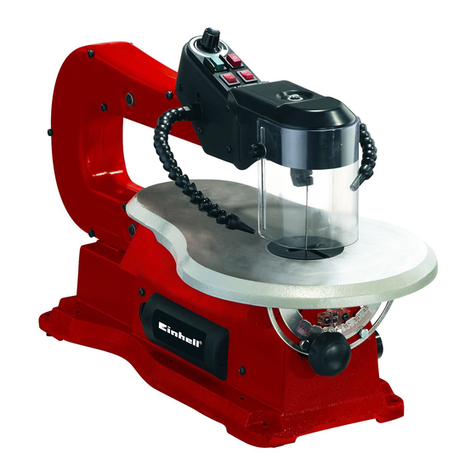
EINHELL
EINHELL RT-SS 120 L operating instructions
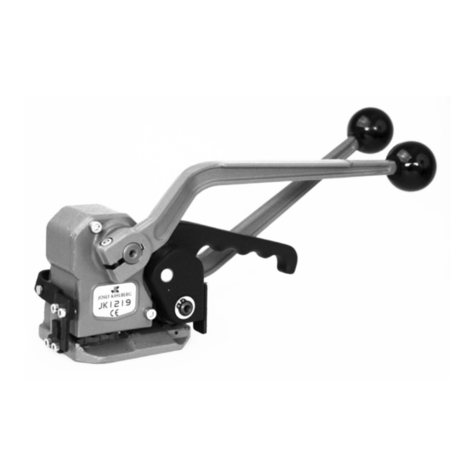
Josef Kihlberg
Josef Kihlberg JK1219HT operating instructions

Sparky Group
Sparky Group K 615CE Original instructions
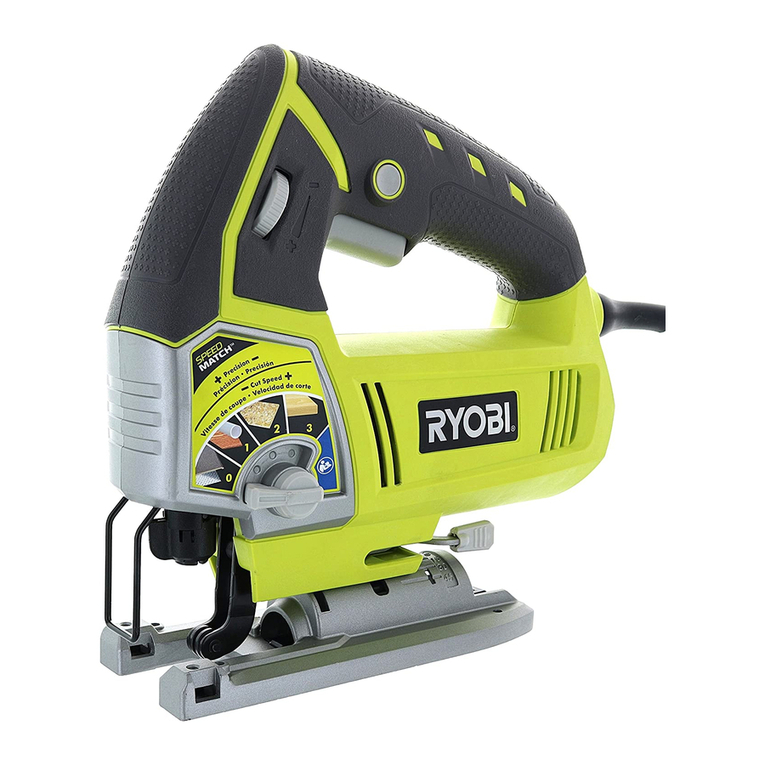
Ryobi
Ryobi JS481L Repair sheet
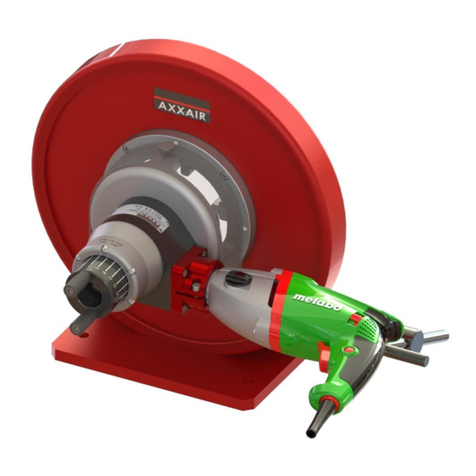
AXXAIR
AXXAIR DC115-BM1 operating instructions
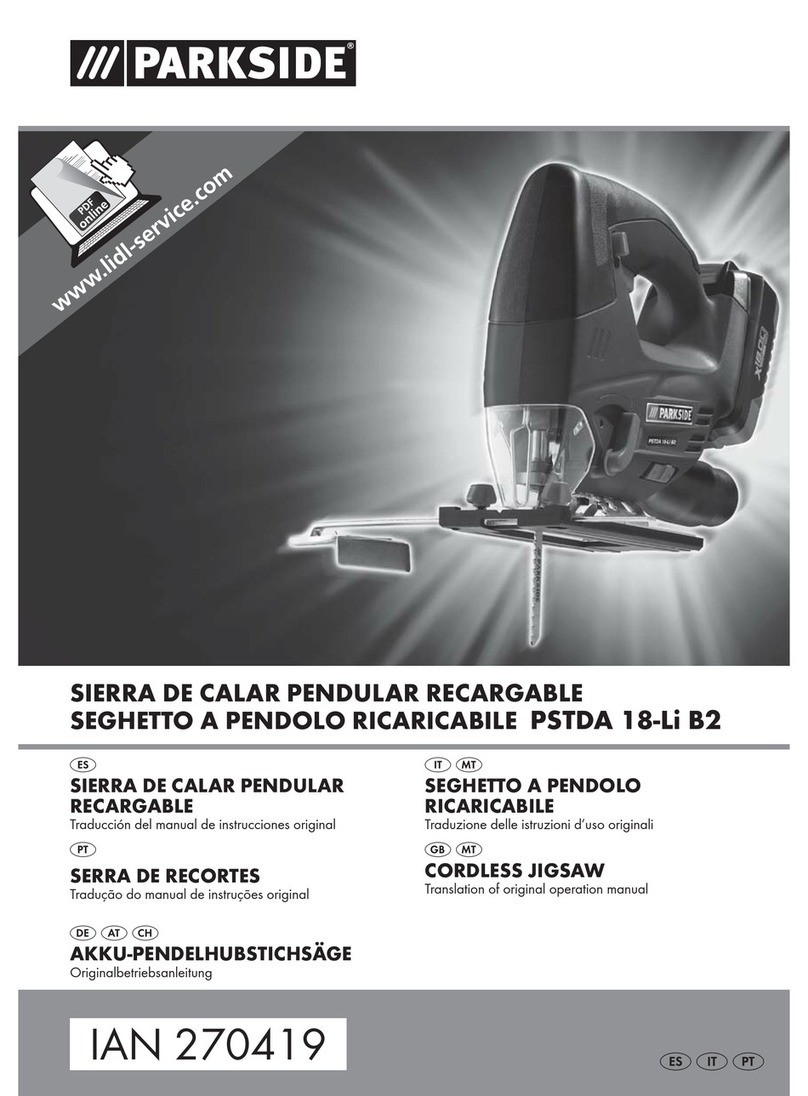
Parkside
Parkside PSTDA 18-Li B2 translation of original operation manual

Baileigh Industrial
Baileigh Industrial PH-19 Operator's manual
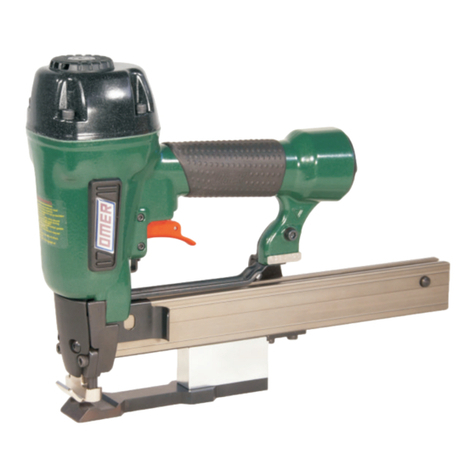
Omer
Omer 590.738 RF Use, maintenance and spare parts manual

Parkside
Parkside PSTK 800 B2 translation of original operation manual
